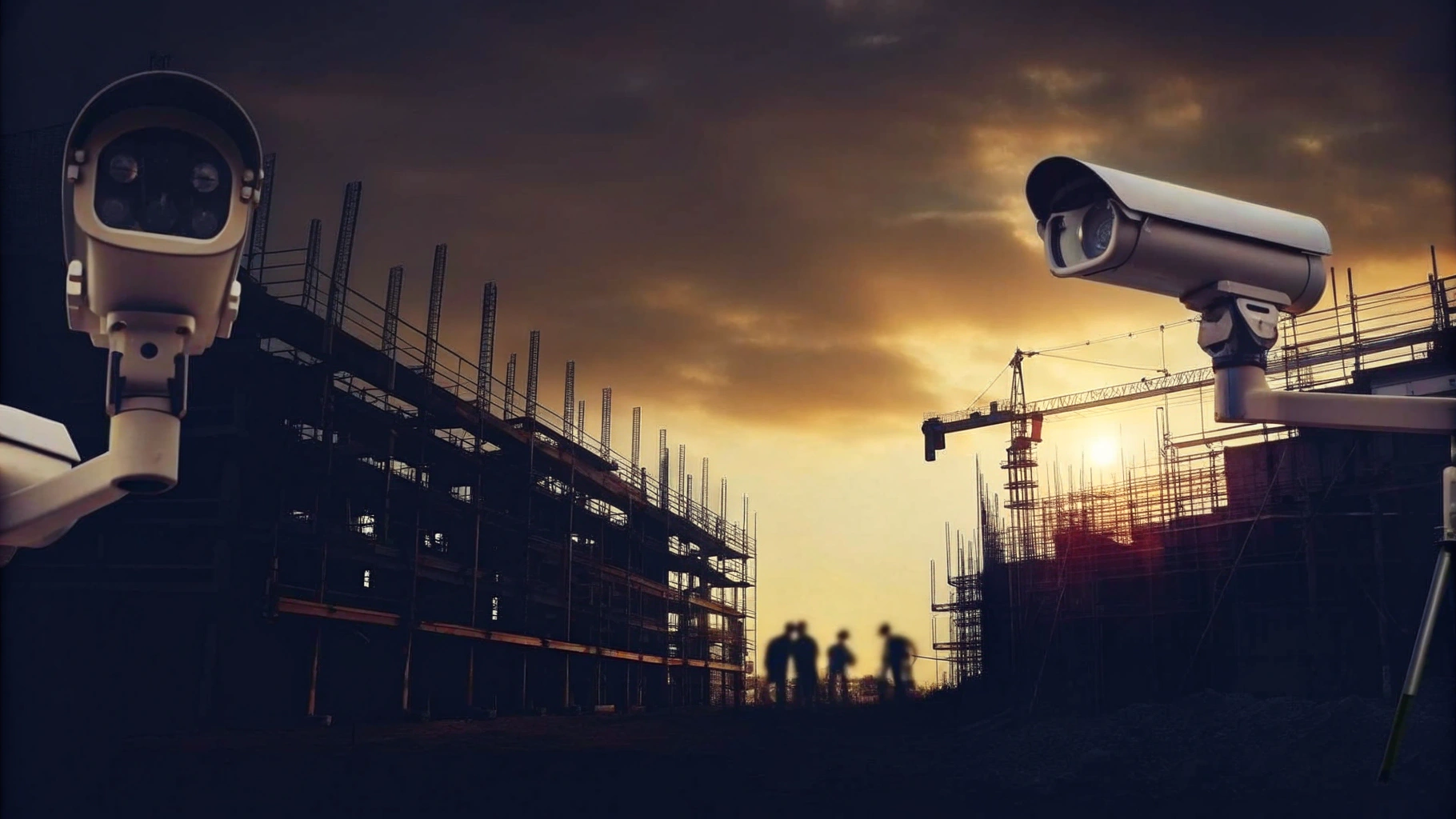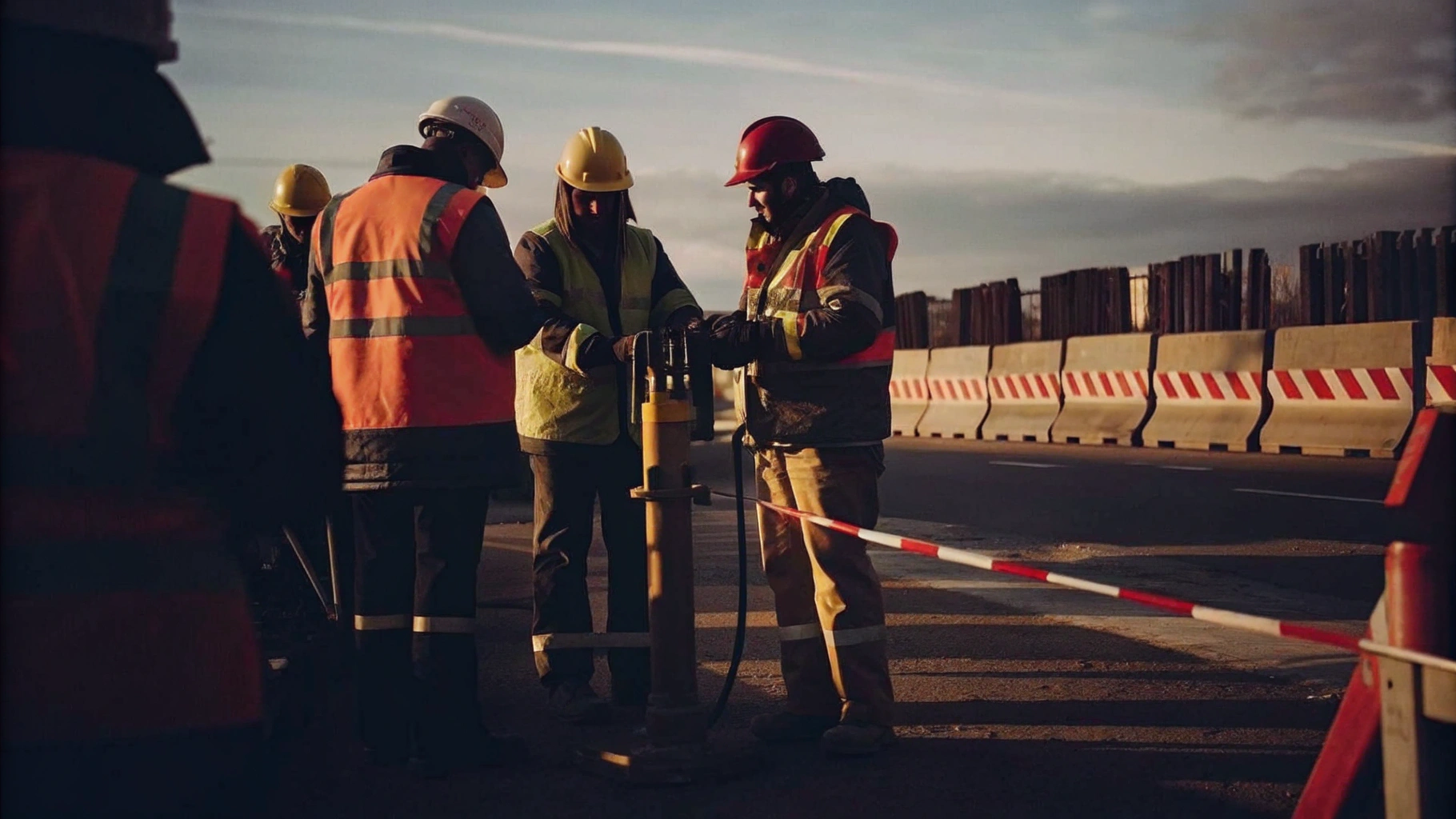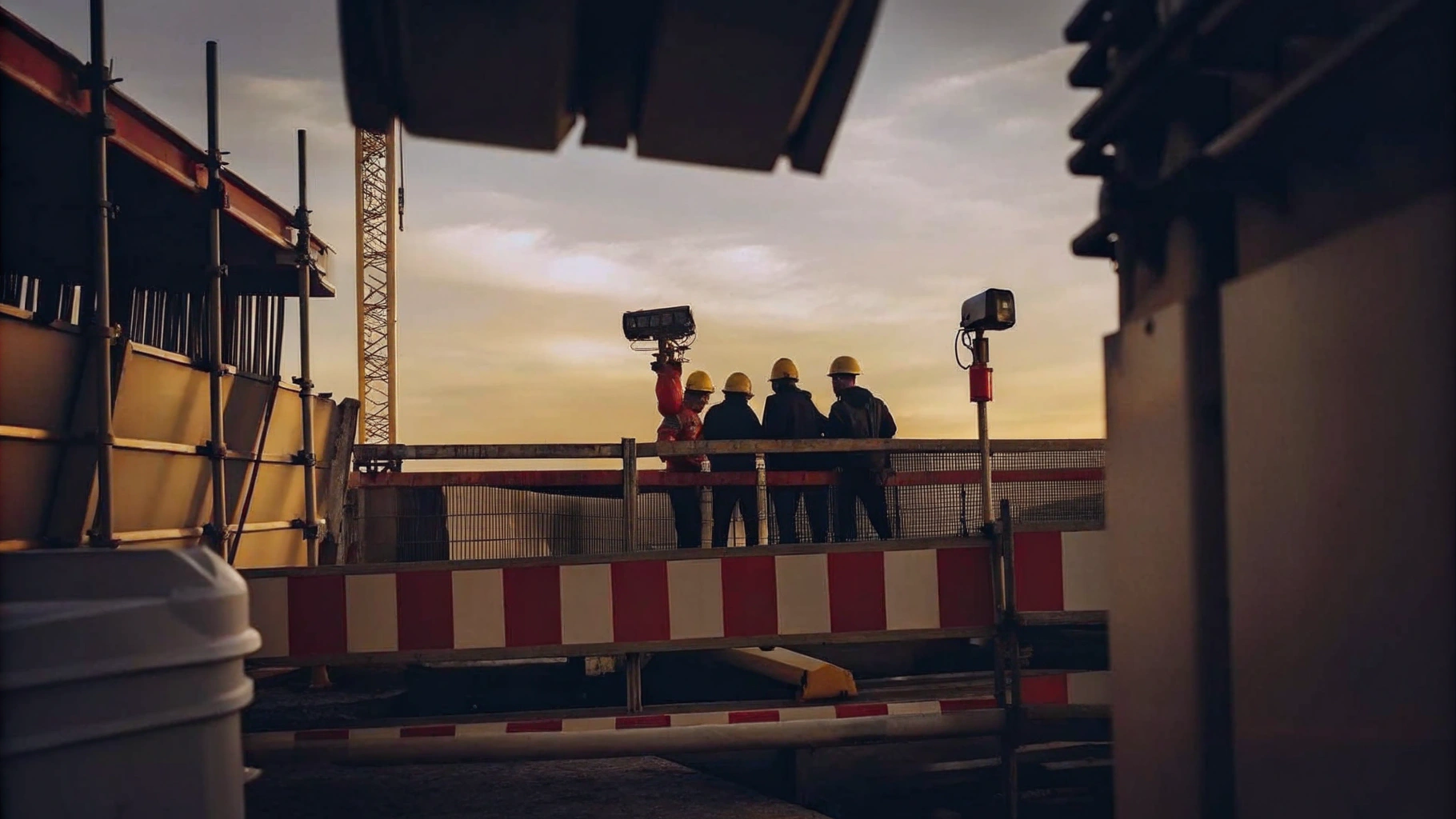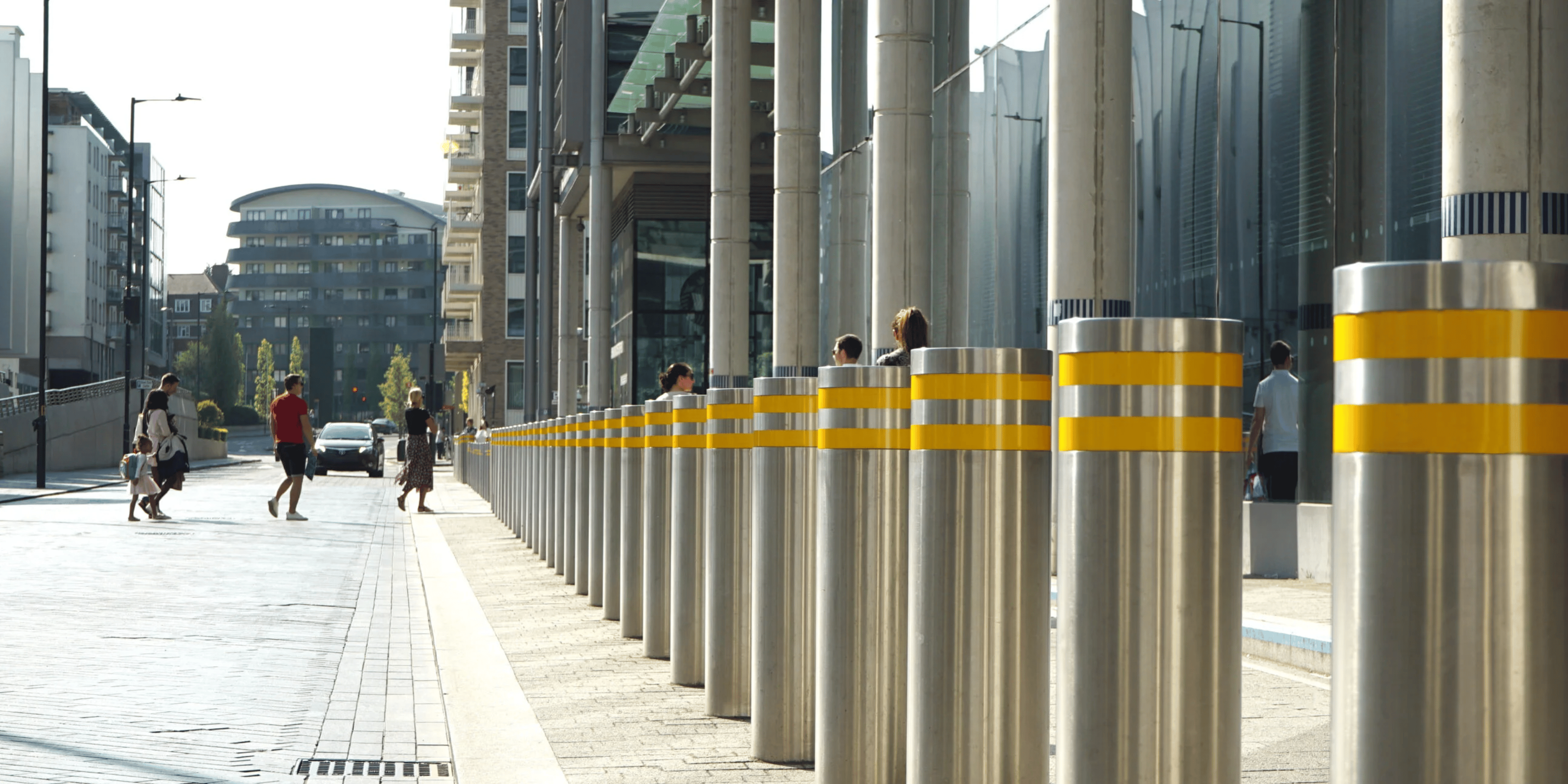
Enhance Key Security in Construction: Best Practices for Managers

Overview
The article highlights essential practises for bolstering security in construction management, underscoring the necessity of thorough risk assessments, cutting-edge security technologies, and continuous training. It elaborates on strategies such as:
- Executing comprehensive vulnerability analyses
- Implementing advanced surveillance systems
- Cultivating a safety-oriented culture through regular training and effective communication
These measures collectively play a vital role in mitigating risks such as theft and vandalism on construction sites, which can have significant financial and operational repercussions for businesses.
Introduction
Construction sites are increasingly becoming prime targets for theft and vandalism, with losses estimated at billions each year. This reality underscores the critical security challenges that the construction industry faces. For construction managers, safeguarding projects is not merely a regulatory requirement; it is essential for the financial and operational integrity of their businesses. Ignoring these risks can lead to significant financial losses, operational disruptions, and reputational damage.
As the industry grapples with these unique challenges, managers must navigate the delicate balance between integrating advanced technologies and implementing robust training protocols. This article explores best practises that not only enhance security measures but also empower managers to proactively address vulnerabilities. The lesson is clear: early investment in security is crucial to prevent greater losses down the line.
How can managers effectively create a secure working environment while ensuring compliance with safety regulations?
Assess Unique Security Risks in Construction
To effectively assess security risks on a construction site, managers must initiate a comprehensive risk assessment, which encompasses several critical steps:
- Identifying vulnerabilities begins with a thorough walkthrough of the location to pinpoint potential security weaknesses. Managers should look for open access points, poorly lit areas, and high-value materials that are attractive targets for theft. With 92% of building locations facing , identifying these weaknesses is essential.
- Analysing historical data is equally important. Reviewing past incidents of theft, vandalism, or safety breaches in the area provides insight into typical risks, which can guide protective strategies. Notably, building site theft amounts to £800 million each year in the UK industry.
- Consulting with stakeholders enhances this assessment. Engaging contractors, workers, and local law enforcement can uncover unique vulnerabilities associated with the project that may not be immediately apparent. This collaborative approach is vital for comprehensive risk identification.
- Documenting findings is the next step. Creating a detailed report of identified risks, categorised by severity and likelihood, provides a basis for developing a customised protection plan. This ensures that the most critical threats are prioritised.
By systematically identifying and documenting risks related to key security, project managers can implement targeted protective measures that effectively mitigate the most pressing threats to their initiatives. Early investment in security not only safeguards assets but also fosters long-term business resilience.
Integrate Advanced Security Technologies
To effectively integrate advanced security technologies, construction managers should consider several best practices that emphasize key security in response to the pressing realities of security challenges in the UK construction sector.
CCTV Systems: The reality is that construction site theft costs UK businesses over £800 million annually. To mitigate this risk, it is essential to install equipped with night vision capabilities for 24/7 monitoring. Strategically placing cameras at all access points and high-value zones, along with employing mobile CCTV towers for adaptable deployment, enhances security. Priority First offers comprehensive CCTV monitoring services, ensuring real-time surveillance and prompt responses to any suspicious activity. Moreover, these systems can be seamlessly integrated with existing protective arrangements for improved efficiency.
Entry Control Systems: In practice, implementing electronic entry control systems that utilize ID badges or biometric verification—such as facial recognition or fingerprint scanning—limits entry to permitted individuals only. This method significantly enhances site protection and compliance with safety regulations. By 2025, the relevance of entry control systems will only increase, making them a critical component of construction security.
Alarm Systems: That said, employing motion sensors and alarm systems that provide prompt notifications to personnel or local authorities in the event of unauthorized entry is crucial. This proactive measure can significantly reduce response times and deter potential intruders. Priority First specializes in alarm response services, ensuring that any incidents are managed swiftly and efficiently, offering peace of mind to location managers.
AI-Powered Monitoring: The lesson is clear: leveraging AI technology for real-time threat detection and behavioral analysis can greatly enhance site security. These systems are capable of detecting unusual activities, such as unauthorized entry or safety hazards, and sending instant alerts to security teams for immediate action. AI models trained on thousands of real intrusion scenarios enable proactive responses, ultimately improving overall safety.
Mobile Security Solutions: Security is not an expense; it is business continuity in practice. Considering the deployment of mobile surveillance units that can be relocated as needed provides enhanced coverage and flexibility. These units can operate in areas lacking power and internet access, ensuring continuous monitoring even in remote locations. Priority First's mobile protection solutions are tailored to adapt to the evolving requirements of building sites, guaranteeing thorough safeguarding.
By adopting these technologies, construction sites can significantly enhance their safety stance, ensuring key security measures are implemented to effectively reduce the risks of theft and vandalism while adhering to health and safety regulations. Early investment in these protective measures prevents greater losses later, positioning security as a critical business function.

Establish Protocols and Staff Training
To establish effective security protocols and training, construction managers should:
- Establish thorough key security protection guidelines: Formulate clear policies detailing procedures for safeguarding, including entry control, incident documentation, and emergency response strategies. Implementing strong access control systems is essential for key security to regulate the flow of personnel and vehicles, ensuring that only authorised individuals have access to sensitive areas of the site.
- Conduct Regular Training Sessions: Arrange training for all personnel on safety protocols, emphasising the significance of alertness and reporting unusual activities. Studies show that organisations participating in awareness training experience a 70% decrease in incidents, underscoring the importance of such programmes. Tailored training can further enhance operational efficiency and create a safe environment for employees and visitors.
- Simulate Safety Scenarios: Conduct drills to prepare staff for potential incidents, ensuring they know how to respond effectively. This proactive approach can significantly enhance incident response times and overall site safety, aligning with Priority First's commitment to comprehensive building audits and risk assessments.
- Encourage Communication: Create an atmosphere where employees feel at ease reporting issues or breaches without fear of consequences. A robust protective culture encourages employee involvement and adherence to safety measures, which is crucial for reducing insider threats. This corresponds with Priority First's customised risk management services that emphasise understanding particular dangers and needs.
- Review and Update Protocols: Regularly assess and revise security protocols based on new threats or alterations in the building environment. Ongoing evaluation is vital, as the building sector encounters evolving challenges, including advanced strategies used by organised crime groups that threaten key security. By integrating comprehensive access control and logistics management solutions, project managers can ensure key security for their locations while maintaining operational efficiency.
- Utilise Consulting Services for Protection: Consider collaborating with Priority First for , including threat evaluations and risk management planning. These services can offer valuable insights into potential weaknesses and assist in creating customised strategies that fit the particular requirements of your building project.
By prioritising training, clear communication, and utilising expert consulting services, project managers can enable their teams to actively engage in maintaining site safety, ultimately leading to safer and more efficient operations.

Implement Continuous Monitoring and Assessment
To implement continuous monitoring and assessment, construction managers should consider the following strategies:
- Establish a Monitoring Schedule: Regular intervals for reviewing protective measures and assessing their effectiveness, including technology performance and personnel readiness, are essential. This proactive approach ensures that key security protocols are consistently evaluated and improved.
- Utilise Data Analytics: Analysing data from protection systems can reveal patterns or recurring issues that may . For instance, a survey indicated that 92% of construction professionals experienced petty crime, underscoring the importance of data analytics in identifying trends related to unauthorised access attempts or equipment usage. By doing so, managers can maintain key security by addressing potential weaknesses before they escalate.
- Conduct Surprise Inspections: Unannounced evaluations are vital for assessing compliance with protocols and the effectiveness of protective measures. Research shows that surprise inspections are a key security measure that can significantly enhance compliance and deter potential breaches, fostering a culture of accountability among staff.
- Solicit Feedback: Regularly collecting input from staff about protective measures and observed vulnerabilities is crucial. As highlighted by Priority First, this feedback is essential for recognising blind spots and promoting a culture of continuous improvement, ensuring that all team members contribute to upholding the platform's key security and integrity.
- Adjust Security Measures: Adaptability in security strategies based on assessment findings is necessary. This flexibility addresses emerging threats and ensures that key security is upheld against evolving risks. For example, implementing specific Hostile Vehicle Mitigation (HVM) strategies, such as installing physical barriers like bollards and reinforced planters, can prevent vehicles from being used as weapons, thereby enhancing overall safety.
By committing to continuous monitoring and evaluation, construction managers can proactively address safety challenges, improve operational efficiency, and ensure key security in the working environment. Furthermore, referencing case studies from Priority First can illustrate the real-world applications of these practises, demonstrating their effectiveness in enhancing key security at sites.

Conclusion
Effective security management in construction is not merely a necessity; it is a critical component of ensuring project success and safeguarding valuable assets. By understanding and implementing key security practises—such as thorough risk assessments, advanced technology integration, and comprehensive staff training—construction managers can create a safer environment that mitigates potential threats.
The reality is that assessing unique risks through vulnerability identification and stakeholder engagement is essential for enhancing security on construction sites. Integrating advanced technologies like CCTV, entry control systems, and AI-powered monitoring can significantly bolster security measures. Furthermore, establishing robust protocols and conducting regular training sessions fosters a culture of safety, encouraging proactive involvement from all team members. Continuous monitoring and assessment ensure that security practises evolve in line with emerging threats, maintaining the integrity of the construction site.
In practise, prioritising key security measures in construction is imperative for protecting assets and ensuring operational efficiency. By investing in advanced technologies and fostering a culture of safety through training and communication, construction managers can significantly reduce risks and enhance resilience. The lesson is clear: the construction industry must recognise that security is not merely an operational expense but a vital investment in long-term success and safety. Embracing these best practises will not only safeguard projects but also contribute to a more secure and efficient working environment for all stakeholders involved.
Frequently Asked Questions
What is the first step in assessing security risks on a construction site?
The first step is to conduct a comprehensive risk assessment, starting with a thorough walkthrough of the location to identify potential security vulnerabilities.
What should managers look for during the walkthrough?
Managers should look for open access points, poorly lit areas, and high-value materials that could be attractive targets for theft.
Why is identifying vulnerabilities important?
Identifying vulnerabilities is crucial because 92% of building locations experience theft and vandalism, making it essential to pinpoint weaknesses to enhance security.
How does historical data contribute to assessing security risks?
Analysing historical data helps managers understand past incidents of theft, vandalism, or safety breaches in the area, providing insights into typical risks and guiding protective strategies.
What is the financial impact of building site theft in the UK?
Building site theft amounts to £800 million each year in the UK industry.
Why is consulting with stakeholders important in the risk assessment process?
Consulting with stakeholders such as contractors, workers, and local law enforcement helps uncover unique vulnerabilities associated with the project that may not be immediately apparent.
What should be done after identifying and analysing risks?
After identifying and analysing risks, managers should document their findings in a detailed report, categorising risks by severity and likelihood.
How does documenting risks benefit project managers?
Documenting risks provides a basis for developing a customised protection plan, ensuring that the most critical threats are prioritised for mitigation.
What is the overall goal of implementing targeted protective measures?
The goal is to effectively mitigate the most pressing threats to construction initiatives, safeguarding assets and fostering long-term business resilience.




